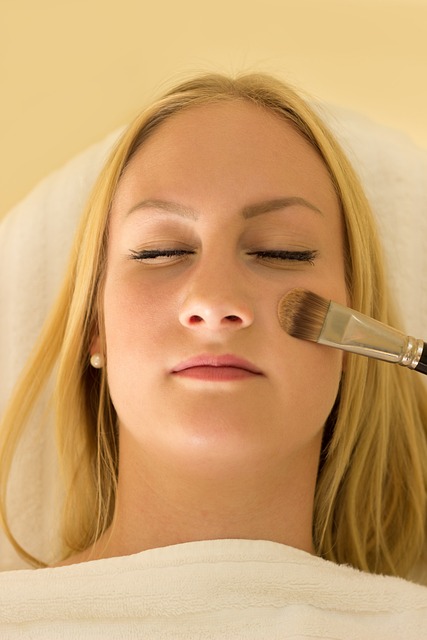Skin tags, harmless growths common on neck, armpits, and groin, can be removed at home using over-the-counter (OTC) solutions like salicylic acid or cryogenic treatments, which soften or freeze them. While effective and safe for most, these methods may cause mild irritation; individuals with sensitive skin or medical conditions should proceed cautiously, monitoring for adverse reactions and consulting a dermatologist if severe symptoms occur. This guide details proper cleaning, application of OTC creams, and regular inspection for safe at-home Manchester tag removal.
Looking to remove skin tags safely and effectively from the comfort of your home? This comprehensive guide explores Manchester tag removal using over-the-counter (OTC) products. First, we’ll demystify skin tags, delving into their causes and types. Then, discover a range of OTC options for effective yet gentle removal. We’ll provide detailed step-by-step instructions for application and care, ensuring optimal results. Additionally, learn about potential side effects and when to consult a professional for safe and reliable Manchester tag removal.
- Understanding Skin Tags: Causes and Types
- Over-the-Counter Options for Safe Removal
- Step-by-Step Application and Care Instructions
- Common Side Effects and When to Seek Professional Help
Understanding Skin Tags: Causes and Types
Skin tags, also known as acrochordons, are small, soft skin growths that typically appear on the neck, armpits, and groin area. They can be as small as a few millimeters or grow up to a centimeter in size. Although they are generally harmless, many people opt for Manchester Tag Removal due to aesthetic concerns or discomfort caused by their location.
There are several types of skin tags, with the most common being acral, which occur anywhere on the body, and perianal, often found in the anal region. Skin tags can also be classified based on their shape, including spindle-shaped, cobblestone (irregularly shaped), or thread-like varieties. Understanding these causes and types is essential when considering over-the-counter treatments for effective Manchester Tag Removal.
Over-the-Counter Options for Safe Removal
When considering Manchester tag removal, over-the-counter (OTC) options have become increasingly popular for their accessibility and relative safety. Products like salicylic acid and cryogenic treatments are available at most pharmacies and offer effective yet gentle methods for removing skin tags. Salicylic acid works by softening the skin and loosening the tag’s hold, while cryogenic treatments use extreme cold to freeze and destroy the tag. Both methods are minimally invasive and can be performed at home, providing a convenient solution for those seeking to remove skin tags without professional intervention.
These OTC options prioritize safety and reduce the risk of scarring or infection compared to more aggressive methods. However, it’s crucial to follow the instructions carefully and consult a healthcare provider if any adverse reactions occur. Additionally, while these products are generally suitable for most people, individuals with sensitive skin or underlying medical conditions should exercise caution.
Step-by-Step Application and Care Instructions
Step-by-Step Application and Care Instructions for Manchester Tag Removal
Start by thoroughly cleaning the skin tag and surrounding area with mild soap and warm water. Pat dry to ensure no moisture remains. Apply a small amount of over-the-counter (OTC) skin tag removal cream or solution to the tag, following the product’s instructions. Typically, this involves spreading a thin layer once daily, but always check the packaging for specific guidance. For best results, apply it at night and cover the area with a bandage to protect it during sleep.
The next morning, remove the bandage and gently wash the area again. Inspect the skin tag for any changes or signs of falling off. If it hasn’t detached, repeat the application process. Be patient; it might take several weeks of consistent use to successfully remove the skin tag. Remember, OTC treatments can cause mild irritation, so monitor your skin’s reaction and discontinue use if you experience excessive redness, swelling, or pain.
Common Side Effects and When to Seek Professional Help
While over-the-counter (OTC) skin tag removal products can be effective and convenient, they’re not without potential side effects. Common reactions include mild irritation, redness, and itching at the treatment site. Some users may also experience slight bleeding or discomfort during the application process. These OTC treatments are generally safe for most people, but those with sensitive skin or underlying medical conditions should proceed with caution.
If you notice prolonged or severe reactions, such as excessive swelling, pain, or signs of infection (like pus or warmth), it’s important to stop using the product immediately and consult a dermatologist in Manchester for professional tag removal advice. They can offer specialized treatments tailored to your needs, ensuring safe and effective skin tag elimination.
When considering Manchester tag removal, over-the-counter products offer a safe and effective solution for eliminating skin tags. By understanding the different types and causes, you can make an informed decision on the best product for your needs. Following the step-by-step application instructions ensures optimal results while minimizing potential side effects. If concerns arise or previous methods have been ineffective, seeking professional help is recommended. With proper care, you can bid farewell to those small skin tags once and for all.
